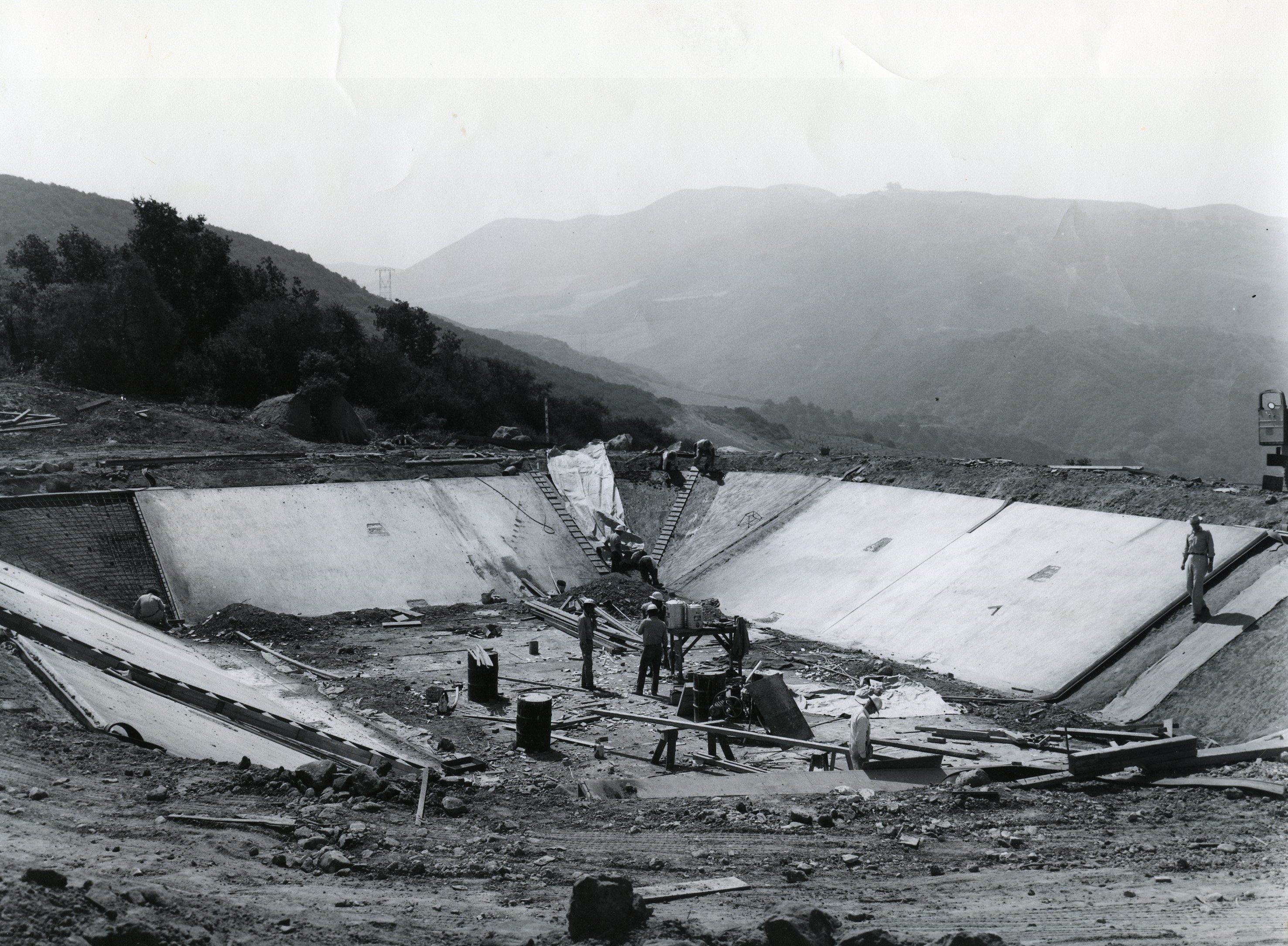The History of Lake Cachuma
Twenty Years in the Making

The creation of Lake Cachuma took almost 20 years. The Santa Barbara County Board of Supervisors commissioned a report early in 1938 regarding the “utilization of water resources.” This report, completed the following year, called for a new dam “between the mouth of Santa Cruz Creek and Cachuma Creek” on the Santa Ynez River. The report further stated that “the future of Santa Barbara County depends upon the prompt execution” of the proposal.
What followed was almost 10 years of political wrangling. Two powerful local figures, Thomas Storke, publisher of the Santa Barbara News-Press, and County Supervisor Charles Leo Preisker, joined forces to push for the new dam. The South Coast’s increasingly serious water problem was the pair’s most important ally. By the fall of 1947, all of Southern California was in the grip of a serious drought. Estimates held that if there was no significant rainfall in the near future, Gibraltar would go dry by April 1948. The Cachuma site for a new dam was formally approved in December 1947.
Still, the City Council imposed water rationing early in 1948. Daily usage dropped from 7 million gallons to close to the consumption target of 2.5 million a day. It was not until the State Legislature passed an emergency appropriations bill of over $300,000 for the raising of Gibraltar Dam, however, that the short-term crisis was alleviated.
There was still significant opposition to the Cachuma site, led by Lewis Welch, owner of San Fernando Rey Ranch in the Santa Ynez Valley. A good part of Welch’s land would be inundated if the water project went forward. Meanwhile, negotiations continued with the federal government to secure the necessary construction funds for a dam. Storke once again entered the fray, pulling every political string he could, and he was joined by County Supervisors T.A. Twitchell and Clifford Bradbury.
Locally, an election was held in November 1949 to put the stamp of approval on the Cachuma project. It was the last stand for Welch and the dam’s opponents. Storke weighed in with his News-Press while Santa Barbara’s mayor and other influential figures spoke up for the project. The final tally showed over 75 percent of the voters in favor.
Building the dam was a huge undertaking. The dam itself would contain over 7 million cubic yards of earth fill and rock. The final price tag of the project would amount to over $43 million. The most formidable aspect of the project proved to be the boring of the “Terrible Tecolote” Tunnel, over 6 miles through the Santa Ynez range.
Begun in 1950, the tunnel took almost exactly six years to complete. Natural gas, floods of hot sulfur water, and sand accumulation all made for “the toughest tunnel job ever tackled by the Bureau of Reclamation,” according to one federal official. An explosion at the north end of the tunnel contributed to a construction halt of 13 weeks. A worker was later killed when his mine car derailed in the tunnel. Working conditions were abominable; temperatures neared 120 degrees with 100 percent humidity. Still, work continued, and the tunnel was holed through in January 1955.
On April 12, 1958, Lake Cachuma spilled, capping this phase of the South Coast’s perennial search for water. One observer called it “the most important event in the modern history of Santa Barbara.” It would be difficult to argue with that assessment.



